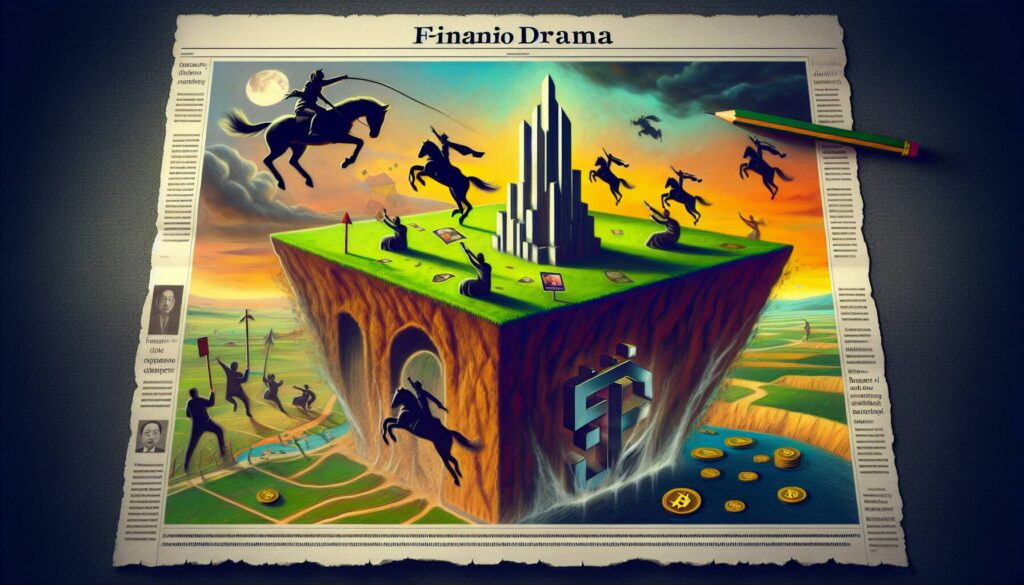In a striking pivot within the crypto landscape, Kevin O’Leary, widely known as “Mr. Wonderful” from the television show “Shark Tank,” has turned his attention from the world of non-fungible tokens (NFTs) to the tangible allure of rare, high-end sports collectibles. In a recent interview with CoinDesk TV, O’Leary revealed his latest venture—a staggering $13 million purchase of a unique dual Logoman card that features basketball legends Kobe Bryant and Michael Jordan.
O’Leary is positioning this one-of-a-kind card as a vital piece of his expanding collection of rare assets, akin to his investments in fine art and luxury items. He remarked, “The majority of the returns over 20 years have accrued to the collectors who bought the piece uniques,” emphasizing the potential profitability of such investments. The billionaire investor chose collaboration over competition when acquiring this valuable card, stating, “I’d rather own 33 and a third of it than zero,” showcasing a strategy grounded in shared ownership.
“NFTs turned out to be a fad,”
O’Leary asserted, firmly distancing himself from the digital collectible market that saw exponential growth just a couple of years ago. In 2021, the NFT space experienced a meteoric rise, climbing to a trading volume of $25 billion, only to see a dramatic downturn that left many high-profile collections struggling. This trend highlights the volatility that has characterized NFTs, a sentiment echoed by O’Leary who lamented the lack of physicality in these digital assets. He observed,
“Where is the asset? Where can I put my white glove on and go touch it?”
emphasizing his preference for collectibles that boast tangible presence and value.
While O’Leary steers clear of NFTs, he acknowledges their future potential in terms of tokenization, indicating a belief that his physical collectibles may one day be digitized on the blockchain. This would not only streamline their management but also enhance efficiency through innovative financial systems. O’Leary envisions a future where “Wall Street on chain” becomes a reality, harnessing blockchain technology to revolutionize the management and trust of financial assets, while he remains optimistic about foundational cryptocurrencies like Bitcoin and Ethereum.

Kevin O’Leary’s Investment Shift: From NFTs to Rare Collectibles
Key Points:
- Investment in Rare Sports Cards:
- Co-purchased a $13 million dual Logoman card featuring Kobe Bryant and Michael Jordan.
- Views it as a cornerstone of a growing index of unique collectibles.
- Returns on Investment:
- Historically, collectibles have shown significant price appreciation over decades.
- O’Leary compares this strategy to investments in Andy Warhol art and luxury watches.
- Emphasizes that owning a fractional part of high-value assets is better than owning none.
- Rejection of NFTs:
- Believes NFTs are a passing fad with no physical existence.
- Sees value in tangible assets that can be physically touched and valued.
- The NFT market saw significant hype followed by a dramatic decline in sales volumes.
- Future of Tokenization:
- Believes physical collectibles will eventually be tokenized for easier management.
- Envisions a need for a system to index and manage these assets effectively.
- Vision for Blockchain:
- Frames his investment strategy as part of “Wall Street on chain,” indicating modernization of asset management.
- Supports the use of blockchain for enhanced transparency, liquidity, and trust in investment markets.
- Remains optimistic about foundational cryptocurrencies like bitcoin and Ethereum.
“I’d rather own 33 and a third of it than zero.” – Kevin O’Leary
Kevin O’Leary’s Shift from NFTs to Physical Collectibles
Kevin O’Leary’s recent pivot from NFTs to investing millions in rare, high-value sports collectibles highlights a significant trend in the collectible asset market, especially as skepticism surrounding digital assets continues to grow. O’Leary’s strategy contrasts sharply with the NFT craze that saw explosive growth just a few years ago, when the market witnessed exuberant trading volumes skyrocketing to $25 billion in 2021, fueled by celebrity endorsements and brand involvement. However, this market has dramatically cooled, with over 80% of sales evaporating by mid-2022 as the initial hype faded, underscoring the volatility inherent in digital collectibles.
Competitive Advantages: O’Leary’s decision to invest in tangible assets like sports cards is grounded in a strong historical precedent—many collectors have yielded substantial returns over decades, as he noted with his own comparisons to high-value art and luxury items. The one-of-a-kind nature of collectibles like his dual Logoman card featuring Kobe Bryant and Michael Jordan offers unique investment security that NFTs often lack. In a market that can feel abstract and unpredictable, having a physical asset allows for deeper emotional connections and perceived value stability.
Moreover, O’Leary’s method of partnering with investors to own fractions of expensive assets rather than outright purchases mitigates financial risks. This collaborative approach could inspire other investors seeking valuable assets without bearing the entire cost alone, advocating a community-oriented aspect of investing.
Competitive Disadvantages: Despite its allure, O’Leary’s focus on physical collectibles isn’t without challenges. The niche market for high-end sports cards can be highly competitive, making sourcing unique pieces difficult. Additionally, concerns about storage, maintenance, and authenticating the value of collectibles could deter potential investors who might otherwise be attracted to the lower entry barriers of a digital asset market. As traditional commodities shift towards tokenization, the traditional collectible market must also adapt or risk falling behind innovative trends.
This shift may pose challenges for investors who have heavily invested in NFTs, leaving them potentially vulnerable to losses as the market recalibrates. Collectors who adhered to the speculative nature of NFTs might find O’Leary’s approach daunting due to the higher upfront costs associated with rare physical assets, further complicating their investment portfolios.
Ultimately, O’Leary’s strategy resonates with seasoned collectors and investors looking for tried-and-true avenues for wealth appreciation. Still, it could leave NFT-focused speculators struggling to redefine value in an increasingly fickle market—a salient reminder that in the realm of investment, tangible often outweighs the digital.

















